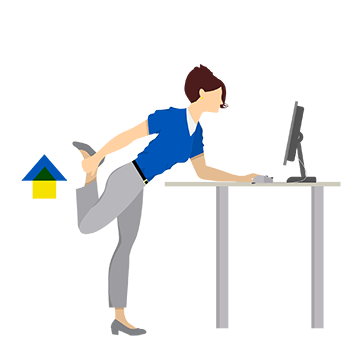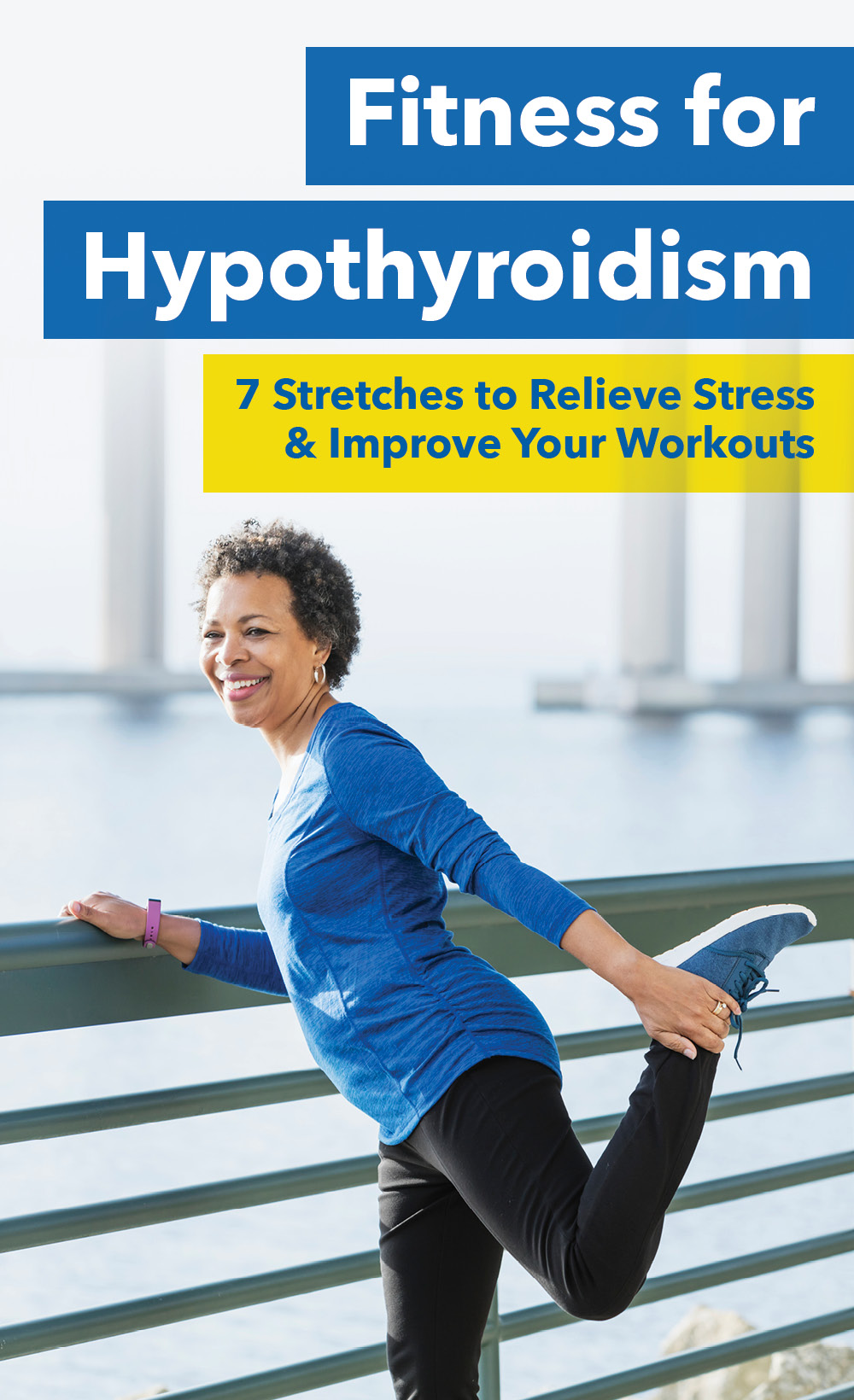Expert Advice

Acella Pharmaceuticals, LLC., is partnering with Angila Berni, BS, SFG2, to bring greater awareness to the importance of thyroid care and education. This post is part of a paid sponsorship by Acella Pharmaceuticals and should not be construed as medical advice. Please talk to your doctor about your individual medical situation.
Disclaimer: The information provided is for educational purposes only and does not substitute professional medical advice. Consult a medical professional or healthcare provider before beginning any exercise, fitness, diet, or nutrition routine.
For patients with hypothyroidism, stretching provides benefits before and after workouts. But it also helps provide a means of stress release.
In this post, we’ll review a stretching routine that is great for all fitness levels. It can be incorporated into a morning routine on its own or before and after workouts.
Healthy, toned bodies are formed from the inside out and begin with the breath. Initiating each daily practice with mindful breathing bridges the gap between the mind-body connection while enhancing stress relief.
Begin each practice in a seated position, sitting tall and placing your hands on your lap. Close your eyes and breathe in through the nose while drawing the breath down into the belly. Breathe slowly, smoothly and fully without force. Exhale through pursed lips in the same way for three to five breaths. Becoming mindful of your breath allows you to enhance physical, mental and emotional functions and improves the nervous system.
Integrating a whole-body approach is the key to health and healing. Start or end your day or exercise program with some of these beneficial stretches.
Neck Stretch
Start by standing tall. Drop your chin to your chest, followed by looking up to the sky while keeping a relaxed face. Return the head to a neutral position and then look side to side or right to left. Finally, tilt your head by dropping the ear to the shoulder. Repeat each stretch three to five times. This stretch helps reduce cervical stiffness and enhances flexibility.
Shoulder Stretch
With a tall spine (sitting or standing) begin to roll the shoulders back in a circular motion. Repeat in the opposite direction. Complete five rotations on each side. This stretch helps prevent tension from building up in the shoulders, neck and upper back.

Side Body Stretch
Standing tall with one arm above the head and the other hand on the hip, reach for the opposite corner of the room while side bending. Repeat each side five times. This stretch opens the side body and lengthens those muscles.

Seated Chair Spinal Twist
While in a seated position in a chair, cross one leg over the other. Next, sit tall and turn the torso toward the top leg while looking over the shoulder. Hold for 30 seconds on each side. You should feel lengthening along the spine.

Quad Stretch
Using a wall, chair or desk, begin by standing tall. Bend your right knee and grab your ankle with your right hand. Gently lean forward and lift the leg. Hold for 30 seconds on each side. You should feel this stretch in the front of the leg with the bent knee.
Forward Fold
Standing tall, lift the arms above the head and begin to hinge forward reaching toward your toes. Hold for 30 seconds. This stretch lengthens the hamstrings and muscles in the back of the body.
Butterfly Stretch
In a comfortable seated position, bring the soles of the feet together. Gently pull the feet in close to the hips. While maintaining a neutral spine, lower and raise the knees, like a butterfly flapping its wings. Repeat the leg movement five to 10 times. This stretch reduces stiffness in the ankles, knees and hips.
There are several benefits to stretching such as reducing stress and stiffness and preventing injuries. Stretching also increases the body’s temperature and improves circulation. It is important to focus on the whole body when stretching and to hit all the major muscle groups from head to toe.

ML-0494
Note that DTE products, including NP Thyroid®, have not been reviewed by the FDA for safety or efficacy.
IMPORTANT RISK INFORMATION, INCLUDING BOXED WARNING & INDICATIONS
Important Risk Information
Drugs with thyroid hormone activity, alone or together with other therapeutic agents, have been used for the treatment of obesity. In euthyroid patients, doses within the range of daily hormonal requirements are ineffective for weight reduction. Larger doses may produce serious or even life-threatening manifestations of toxicity, particularly when given in association with sympathomimetic amines such as those used for their anorectic effects.
- NP Thyroid® is contraindicated in patients with uncorrected adrenal insufficiency, untreated thyrotoxicosis, and hypersensitivity to any component of the product.
- In the elderly and in patients with cardiovascular disease, NP Thyroid® should be used with greater caution than younger patients or those without cardiovascular disease.
- Use of NP Thyroid® in patients with diabetes mellitus or adrenal cortical insufficiency may worsen the intensity of their symptoms.
- The therapy of myxedema coma requires simultaneous administration of glucocorticoids.
- Concomitant use of NP Thyroid® with oral anticoagulants alters the sensitivity of oral anticoagulants. Prothrombin time should be closely monitored in thyroid-treated patients on oral anticoagulants.
- In infants, excessive doses of NP Thyroid® may produce craniosynostosis.
- Partial loss of hair may be experienced by children in the first few months of therapy but is usually transient.
- Adverse reactions associated with NP Thyroid® therapy are primarily those of hyperthyroidism due to therapeutic overdosage.
- Many drugs and some laboratory tests may alter the therapeutic response to NP Thyroid ®. In addition, thyroid hormones and thyroid status have varied effects on the pharmacokinetics and actions of other drugs. Administer at least 4 hours before or after drugs that are known to interfere with absorption. Evaluate the need for dose adjustments when regularly administering within one hour of certain foods that may affect absorption.
- NP Thyroid® should not be discontinued during pregnancy, and hypothyroidism diagnosed during pregnancy should be promptly treated.
Indications
NP Thyroid® (thyroid tablets, USP) is a prescription medicine that is used to treat a condition called hypothyroidism from any cause, except for cases of temporary hypothyroidism, which is usually associated with an inflammation of the thyroid (thyroiditis). It is meant to replace or supplement a hormone that is usually made by your thyroid gland.
NP Thyroid® is also used in the treatment and prevention of normal functioning thyroid goiters, such as thyroid nodules, Hashimoto’s thyroiditis, multinodular goiter, and in the management of thyroid cancer.
Revised
10/2023
You Are About To Leave This Website
By clicking continue, this link will take you to a website to which Alora Pharmaceuticals’ Policies & Terms of Use do not apply.
^Based on prescriptions filled, NP Thyroid® is the #1 Prescribed DTE in the United States. Source: IQVIA National Prescription Audit (NPA) data on file. Acella Pharmaceuticals, LLC.
